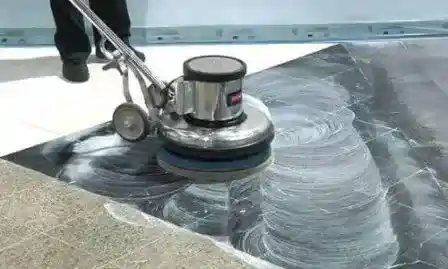Best Marble Polishing Techniques for Stunning Results
Best Marble Polishing Techniques for Stunning Results: Expert Methods and Maintenance
Marble polishing transforms dull, worn stone into a mirror-like surface that elevates any space with timeless elegance. By mastering the best marble polishing techniques, property owners and restoration specialists alike can restore shine, protect against future damage, and maintain a showroom-quality finish. This guide covers three core methods—diamond polishing, crystallization, and oxalic acid treatment—alongside DIY step-by-step instructions, professional workflows, maintenance essentials, and the impact of different marble finishes.
What Are the Top Marble Polishing Techniques for a High-Gloss Finish?
The most effective approaches to achieve a high-gloss marble finish combine precision abrasion, chemical enhancement, and protective sealing. Diamond polishing mechanically levels and smooths stone, crystallization chemically forms a hardened, reflective layer, and oxalic acid restores natural luster by neutralizing surface deposits. These techniques address etching, scratches, and dullness with lasting results.
- Diamond Polishing uses graded diamond pads under pressure to grind and refine marble.
- Crystallization involves applying fluorosilicate compounds to harden the calcium carbonate surface.
- Oxalic Acid Polishing employs acid solutions to dissolve surface etch marks and brighten color.
Each technique balances efficiency, shine, and surface integrity to deliver showroom-worthy results and prepares marble for effective sealing and protection.
How Does Diamond Polishing Restore Marble Shine?
Diamond polishing restores shine by using abrasive grit to remove microscopic surface irregularities, then successively finer pads refine the marble until it achieves a smooth, reflective finish. This method enhances gloss, evens out color, and eliminates scratches and etching.
| Grit Range | Application | Surface Effect |
|---|---|---|
| Coarse (50–200) | Initial grinding of deep flaws | Removes damage down to 0.5 mm |
| Medium (400–800) | Smoothing and scratch removal | Levels and prepares for polish |
| Fine (1500–3000+) | Final polishing stage | Creates mirror-like sheen |
Diamond polishing’s progressive grit approach delivers consistent shine, setting the stage for protective treatments like crystallization or sealing.
Diamond Polishing and Surface Refinement
Diamond polishing utilizes abrasive grit to remove surface irregularities, progressively refining the marble to achieve a smooth, reflective finish. This method enhances gloss, evens out color, and eliminates scratches and etching, resulting in a mirror-like sheen.
This research supports the article’s explanation of how diamond polishing restores marble shine by detailing the process of using abrasive grit to remove imperfections.
What Is the Crystallization Method and How Does It Work?
Crystallization is a chemical reaction technique that forms a hard, glossy layer on marble by applying a fluorosilicate compound. When the crystallizer contacts calcium carbonate, it generates a microcrystalline film that improves gloss and enhances resistance to wear.
- Apply a thin layer of crystallizer across a clean, dry surface.
- Buff the solution with a low-speed rotary machine until it dries to a haze.
- Remove residue with a microfiber pad, revealing a hardened, reflective finish.
This chemical bonding step not only intensifies shine but also adds a protective layer that resists minor abrasion and simplifies routine maintenance.
Crystallization and Chemical Bonding
Crystallization is a chemical reaction technique that forms a hard, glossy layer on marble by applying a fluorosilicate compound. This process enhances the marble’s gloss and increases its resistance to wear and tear, providing a protective layer against minor abrasion.
This citation supports the article’s description of the crystallization method, highlighting the chemical reaction and protective benefits of this technique.
How Is Oxalic Acid Used to Polish Marble Surfaces?
Oxalic acid polishing uses a diluted acid solution applied in paste or liquid form to dissolve surface etch marks and calcium deposits, instantly improving clarity and depth of color. The acid’s reaction lightens stains and removes fine scratches while restoring natural luster.
- Mix oxalic acid paste according to manufacturer instructions.
- Spread evenly with a felt pad and allow it to react for 5–10 minutes.
- Agitate gently and rinse thoroughly with pH-neutral cleaner.
By selectively dissolving imperfections, oxalic acid returns dull marble to a uniform, bright appearance, making it an ideal follow-up to mechanical honing or for periodic spot treatment.
How Can You Polish Marble Yourself? Step-by-Step DIY Techniques
Yes, homeowners can achieve a polished marble surface using readily available tools and compounds, provided the damage is minor and they follow proper safety practices. DIY polishing offers cost savings and immediate improvements for small areas, while leaving complex restoration to professionals.
What Tools and Compounds Are Needed for DIY Marble Polishing?
- A 3-in-1 floor polisher or handheld rotary buffer
- Diamond polishing pads (medium and fine grit)
- Crystallizer compound or polishing powder
- Oxalic acid cleaner or paste for etch removal
- Microfiber cloths and pH-neutral cleaner
How Do You Remove Light Scratches and Etching at Home?
- Clean the surface with a pH-neutral cleaner and dry thoroughly.
- Attach a medium-grit diamond pad to the polisher and work in circular motions until scratches disappear.
- Switch to a fine-grit pad for final polishing.
- Apply oxalic acid paste on etched spots, allow reaction, then rinse.
This process restores even tone and shine to small damaged areas without professional equipment, though it requires careful technique and protective gloves.
When Should You Consider Hiring a Professional Instead?
DIY polishing excels on minor damage, but professionals bring expertise, specialized machinery, and guarantee consistent, high-durability results when you encounter:
- Deep scratches or heavy etching that DIY pads cannot remove
- Large surface areas requiring uniform gloss
- Historic or premium marble that demands preservation standards
How Do Professionals Achieve Stunning Marble Polishing Results?
Professional restoration transforms marble through a precise sequence of grinding, honing, polishing, and sealing. This four-phase workflow ensures deep damage removal, tailored surface refinement, and long-term protection.
What Are the Key Steps in Professional Marble Polishing and Restoration?
- Grinding: Coarse diamond pads extract deep stains and level uneven sections.
- Honing: Medium pads refine texture, removing minor surface scratches.
- Polishing: Fine abrasives bring out a reflective, mirror-like sheen.
- Sealing: Protective sealers lock in shine and guard against stains.
How Do Professionals Choose the Right Technique for Different Marble Types?
- Carrara (soft, white): Medium diamond polishing plus crystallization
- Calacatta (porous, veined): Fine polishing followed by topical sealer
- Dark marble (highly polished): Oxalic acid spot treatment and impregnating seal
What Are the Cost Factors and Benefits of Professional Polishing?
| Expense Component | Cost Range (per sq ft) | Outcome |
|---|---|---|
| Equipment & Labor | $3–5 | Rapid, uniform grinding and polishing |
| Chemicals & Sealers | $1–2 | Durable gloss and enhanced stain resistance |
| Cleanup & Inspection | $0.50 | Complete residue removal and quality assurance |
How Do You Maintain and Protect Polished Marble Surfaces?
Regular cleaning, timely sealing, and preventive care keep marble surfaces gleaming and durable. Maintenance routines mirror the precision of polishing by using gentle products and professional standards when necessary. For complementary restoration of other home surfaces, professional Area Rug Cleaning – Fine Fabric Care applies specialized techniques to preserve textile fibers and extend longevity.
What Are the Best Cleaning Practices for Polished Marble?
Effective marble cleaning relies on:
- pH-neutral stone cleaner to avoid etching
- Soft microfiber cloths or dust mops to prevent scratches
- Prompt spill cleanup, especially acids like lemon or vinegar
Why Is Sealing Important After Polishing and How Often Should It Be Done?
Quality sealers penetrate marble pores to repel stains and moisture, maintaining gloss and color depth.
| Sealer Type | Application Frequency | Protection Level |
|---|---|---|
| Impregnating | Every 6–12 months | Deep stain and water resistance |
| Topical | Annually | Surface sheen enhancement |
How Can You Prevent Etching, Stains, and Dullness on Marble?
Preventive measures safeguard marble integrity:
- Use coasters and mats under beverages and décor
- Wipe acidic or oily spills immediately with a damp cloth
- Avoid abrasive cleansers and scrub brushes
What Are the Different Marble Finishes and How Do They Affect Polishing?
Marble finishes range from glossy to textured, each requiring tailored polishing and maintenance approaches to highlight beauty and ensure durability.
What Is the Difference Between Polished and Honed Marble Finishes?
| Finish | Sheen Level | Maintenance |
|---|---|---|
| Polished | Mirror-like gloss | Requires frequent sealing |
| Honed | Soft, satin matte | Less slippery, hides scratches |
How Are Leathered and Textured Marble Finishes Polished and Maintained?
Leathered and textured marbles receive light abrasion with fine diamond pads followed by gentle buffing to preserve surface character. These finishes require neutral cleaners and avoid heavy polishing that would remove the intended texture.
Which Finishes Are Best Suited for Various Marble Types and Uses?
- Polished marble thrives in living areas and countertops for maximum visual impact.
- Honed marble suits high-traffic floors where slip resistance is valued.
- Leathered textures complement outdoor features and accent walls by concealing wear patterns.
Marble polishing combines mechanical precision, chemical processes, and protective care to achieve lasting brilliance. Whether applying diamond pads, crystallizing surfaces, or tackling etching with oxalic acid, mastering these techniques brings showroom-quality results. DIY enthusiasts can restore small areas with proper tools, while professionals deliver comprehensive, uniform finishes across larger projects. Consistent cleaning, sealing, and preventive practices preserve the polish, and understanding finish types guarantees the right look for any space. Embracing these expert methods protects your investment in marble’s natural beauty for years to come.



